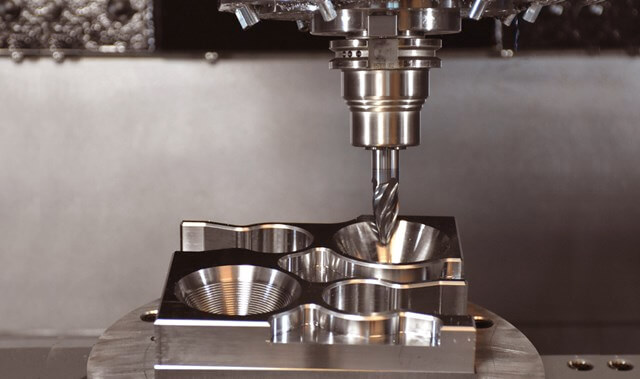The quality and cost of manufacturing parts and products often rely on the speed and accuracy at which they are produced. Manufacturing for industrial parts uses plastic injection molding so that the material costs down and, at the same time, keep the capability for high-level production. When companies choose this method, there is a guarantee of getting accuracy, especially when the design has complex and intricate parts.
On the other hand, if the parts require high tolerances, precision, long-term durability, and quality, manufacturers need to use perfect machine tools. If the requirement is for high-quality molds, CNC machining is the answer. This process accurately removes metal for a flawless tooling process.
What is CNC Machining?
In manufacturing parts and products, the method of designing and producing the mold commands calls for less than perfect process. In fact, the higher the mass production and precision are required, the more complicated the tooling process is.
Thanks to the innovations in the manufacturing process, there is a method that can produce this demand. The technique is called CNC Machining. It creates a high degree of precision because instead of using manually operated machines, it uses computer numerical control or CNC. It functions with a centralized and automated system.
In the process, the CNC machines complete the parts by converting the computer-aided design models into parts with a variation of as little as 0.0001 between them. The process uses advanced manufacturing technology, where a variety of cutting tools removes the materials to complete the design. Because there is a high level of automation present in CNC machining, it is highly recommended for customization of parts or medium-volume productions.
There are many types of materials that can be CNC machined. However, the most commonly used are metals, including brass, steel alloy, aluminum, and many more. It can also be plastic (Nylon, ABS, Delrin), composites, foam, and wood.

CNC surface Finishing*
The Types of CNC Machine
There are different types of CNC machines that remove the materials to achieve the design. Some of these are plasma cutters, laser cutters, and EDM machines. Let us take a look at how they are classified.
3-axis CNC Machines
Among the machines that are included in this type are CNC turning and CNC milling. They are called as 3-axis CNC machines because the movement of the cutting tools is in three linear axes in relation to the workpiece. It is left to right, up and down, and back and forth motion.
Multi-Axis CNC Machines
In Multi-axis, CNC machining has many versions of machines that include continuous 5-axis CNC milling, 5-axis indexed CNC milling and the mill-turning centers that have live tooling. They are that same milling machines or lathes; the only additions are the degrees in which the tools move. One example is in 5-axis CNC milling machines. Instead of just the three linear axes of movements, it allows the rotation of its machine head or tool head or simultaneous. These additional capabilities have additional cost because it needs a specialized machine and expertise.
What are the Benefits of Using CNC Machining
Using CNC machining has its benefits to the end-user. Here are the reasons why you should consider using this manufacturing method.
Highly accurate parts with tight tolerances
The advantage of CNC machining is it can create parts with much dimensional accuracy than any other conventional manufacturing techniques. It has exceptionally tight tolerances that the material can be removed accurately during the finishing stages of its manufacturing.
In CNC machining, the standard tolerance is at +/-0.125mm. For parts with tighter tolerances, it can be down to +/-0.050mm or even up to +/- 0.025mm. If you want to visualize this, it’s about a quarter of the width of your hair.
Quick Turnaround Times
The advances in CNC machining technologies made accelerated production time possible. Compared to manual tooling, CNC machined parts can be delivered in five days. That is comparable to the turnaround time of SLS, an industrial 3D printing process.
One off-custom prototype and parts
Compared to the injection molding, CNC machining does not need any special tooling to make the parts. Therefore, it is compatible with on-demand production like custom parts and prototypes. What’s even better is, this process is more economically viable.
Excellent material properties
The parts made by CNC machines have excellent physical properties, close to the bulk material. For this reason, this process is the best option for parts that need high performance. Also, any material that has enough hardness is compatible with this process.
Suitable for Small to Medium Production
CNC machining is the best option for manufacturing small-to-medium requirements, about 10-1000 parts. Here, the economy of scale is highly applicable because you can spread the cost of production over the multiple parts.
Final Thought
If you are looking for a manufacturing method that provides precision, high tolerances, durability, and high quality, the CNC machining process can be the best option. Compared to manual tooling, CNC technology can deliver the completed parts faster.
Reference
*Image from https://mdaltd.ca/
